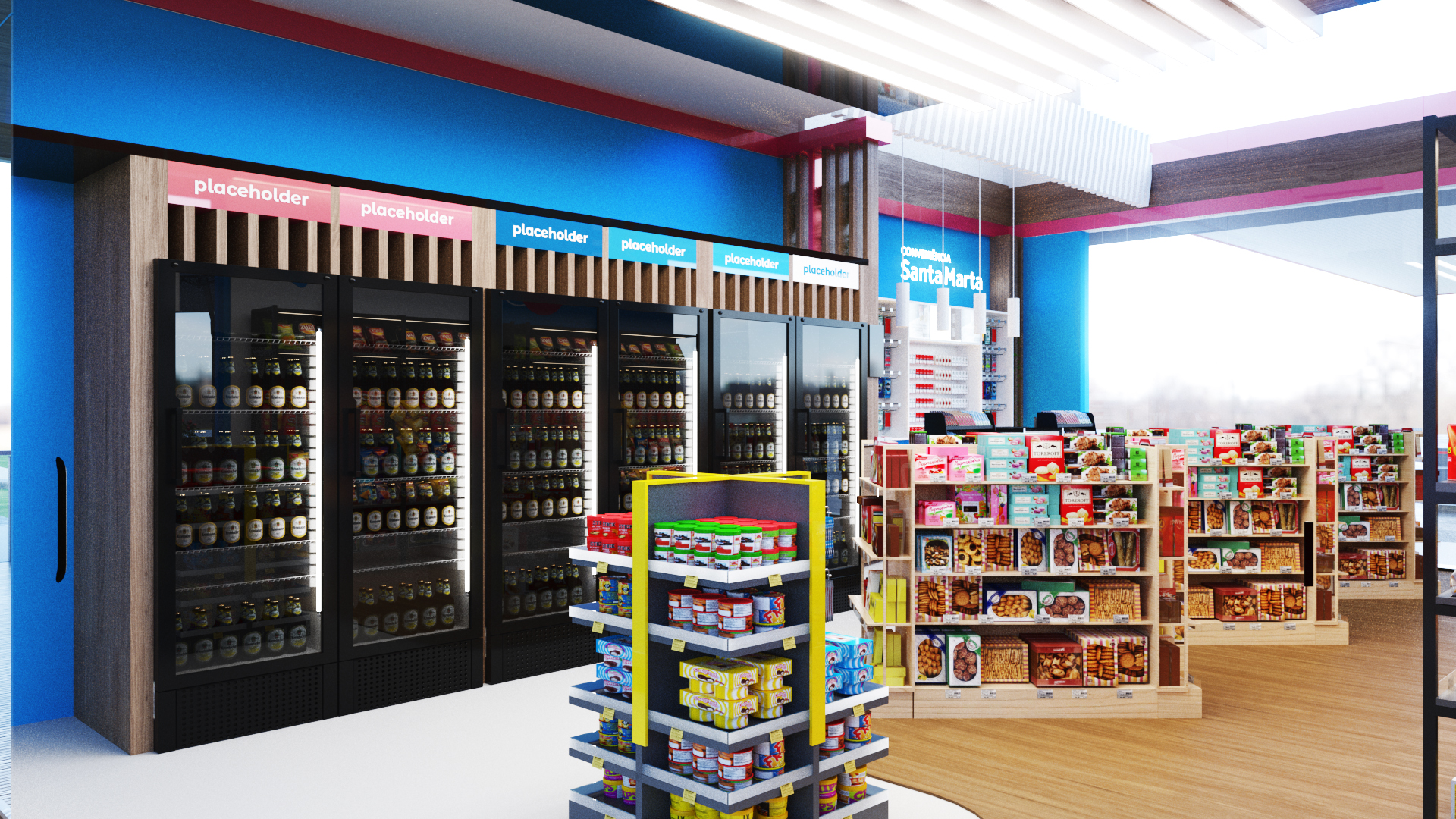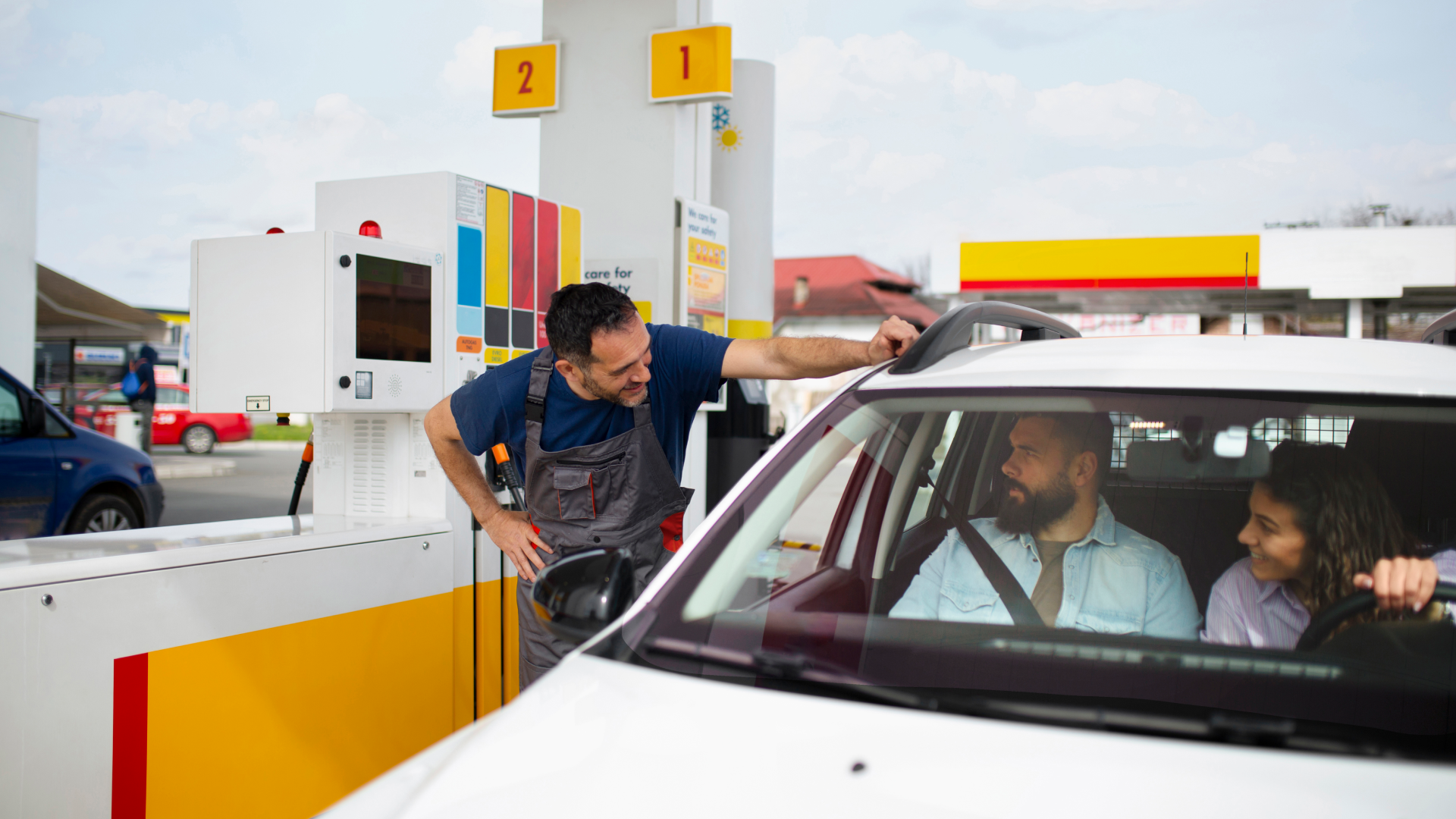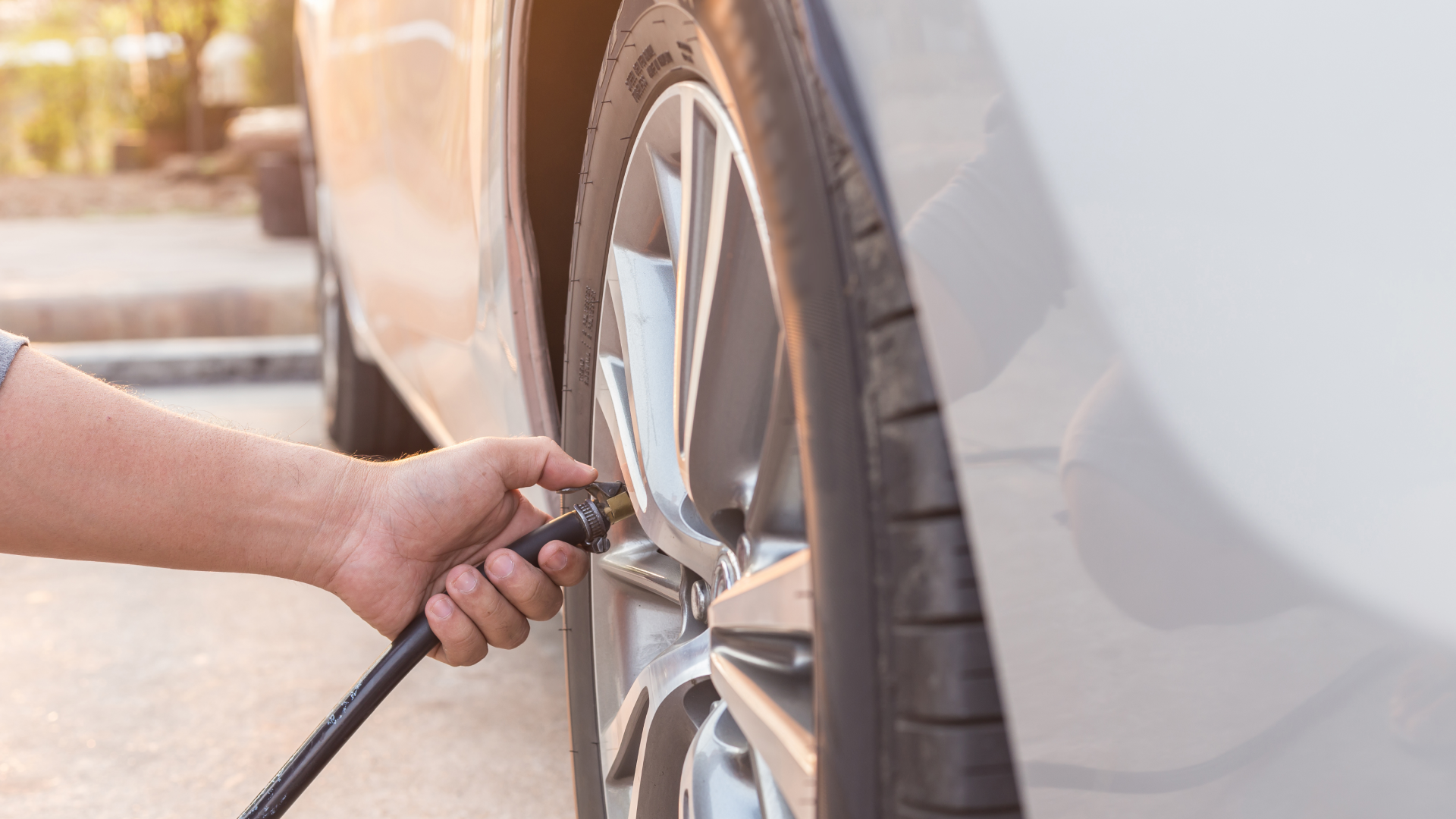The importance of convenience store design for gas stations
Convenience store decoration plays a vital role in shaping customer experience and increasing sales. Beyond visual appeal, it creates a warm and engaging atmosphere that directly influences buying decisions. So, if you’re a gas station owner or investor looking to elevate your store, interior design and décor should be top priorities in your transformation process.
A well-designed space not only enhances aesthetics but also improves product flow, optimizes the customer journey, and ultimately drives profitability. Likewise, the exterior design of the convenience store should be carefully planned to attract both drivers and pedestrians. Below, we highlight key design tips and how a well-thought-out environment can impact your station’s results.
1. Invest in an eye-catching exterior design
Your convenience store’s exterior is the first impression customers get of your gas station. Acting as your brand’s business card, it communicates identity and draws in new visitors. When designing it, focus on visual elements that stand out and create a welcoming atmosphere.
Essential elements for an attractive exterior:
- – Strategic lighting
- – Vibrant, recognizable colors
- – Bold, illuminated signage
- – Modern and durable materials
A strong exterior design must also be functional — ensuring accessibility, visibility, and smooth customer circulation. That way, your station will stand out from competitors and become a recognizable landmark in the area.
2. Choose the right interior theme
Your convenience store’s interior should reflect your brand’s personality and resonate with your target audience. Before defining a theme, consider your station’s identity and product mix to ensure the environment sends the right message and delivers a positive shopping experience.
Theme ideas for different profiles:
- – High-end stations: sophisticated décor with neutral tones and premium finishes.
- – Modern, youthful stations: bold colors and contemporary design elements.
Functionality should guide every design decision. The store layout must support an easy flow for customers while keeping products visible and accessible. Well-positioned display shelves, organized aisles, and creative product presentations help highlight items and increase impulse purchases.
3. Organize the space efficiently
Great convenience store decoration is as much about organization as it is about aesthetics. A clear, efficient layout ensures that customers can move easily through the space, making their visit faster and more enjoyable.
Tips for better organization:
- – Divide the store into clear sections: snacks, beverages, automotive products, and everyday essentials.
- – Use vertical shelving to maximize available space.
- – Add clear signage to guide customers effectively.
Remember: the faster and easier the shopping process, the better the experience — and the higher the likelihood of return visits.
4. Use strategic lighting
Lighting plays a key role in creating a welcoming and visually engaging atmosphere. The right lighting enhances product visibility and adds warmth and comfort to the environment.
Lighting ideas to elevate your store:
- – LED lights: energy-efficient and long-lasting, offering bright, modern illumination.
- – Directional lighting: perfect for highlighting shelves or promotional displays.
- – Exterior accent lighting: attracts drivers and enhances nighttime visibility.
Learn more: Convenience store façade: highlight your gas station
5. Prioritize comfort and functionality
A successful convenience store balances visual appeal with practicality. The environment should make customers feel comfortable while supporting efficient shopping.
How to create a comfortable and functional space:
- – Invest in modern, comfortable furniture (tables, chairs, benches if space allows).
- – Place high-demand products in easy-to-access areas.
- – Design an intuitive customer flow for smooth navigation.
6. Create a unique and personalized décor
To make your convenience store decoration truly stand out, incorporate personalized elements that reflect your brand identity. This could include your station’s color palette, logo, or slogan, or even references to local culture — helping customers feel more connected to your brand.
Ideas for personalization:
- – Local-inspired design: décor that highlights regional history or community identity.
- – Special promotions and displays: interactive setups or themed areas for featured products.
7. Integrate technology into your design
Technology has become an integral part of convenience store design, bringing innovation and efficiency to the shopping experience. Self-service kiosks, contactless payment systems, and digital displays not only streamline operations but also modernize the overall environment.
Smart tech solutions to improve your store:
- – Self-service kiosks for quick and easy checkout.
- – Digital screens showcasing promotions and dynamic content.
The impact of design on customer experience and sales
Investing in convenience store design and exterior branding creates a more attractive, functional, and customer-friendly environment. A strong visual identity doesn’t just enhance the shopping experience — it also drives sales and sets your gas station apart from the competition.
Do you want to make a difference and ensure the success of your gas station? Rely on the support of the only business group exclusively dedicated to the fuel sector in Brazil, with over 25 years of expertise and offering personalized consulting. Contact us for more information!
With Petrol Group, you have everything for your gas station in one place!
Discover: Convenience store project: its importance and how to set up one
Discover more:
Essential products include beverages, snacks, pastries, coffee, cigarettes, hygiene items, automotive accessories, ice, and cooking gas. Services such as quick meals, bill payments, and ATMs also help attract customers.
Profit margins typically range from 30% to 100%, depending on the products sold. In high-traffic stations, monthly revenue can exceed R$50,000, with net profit between 10% and 20%.
Investment can range from R$100,000 to R$500,000, depending on size, layout, and initial inventory. Costs include renovation, furniture, equipment, management systems, and working capital.


